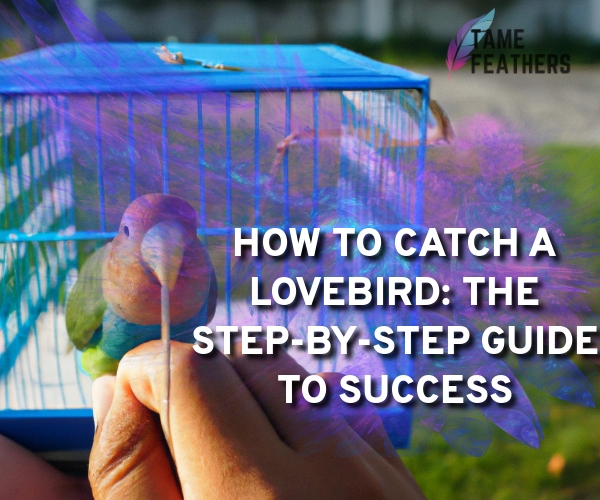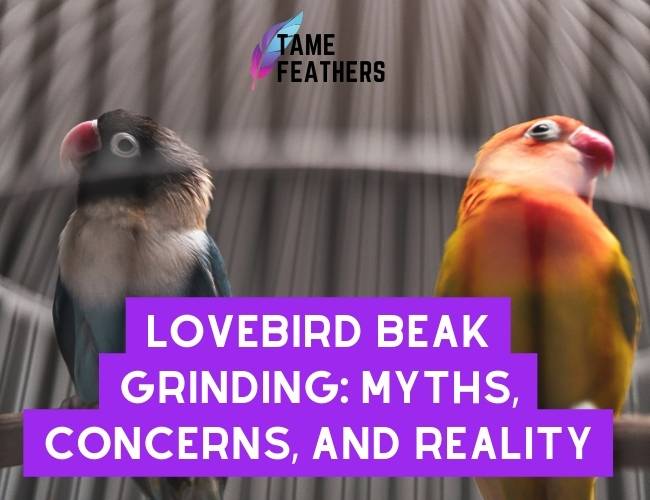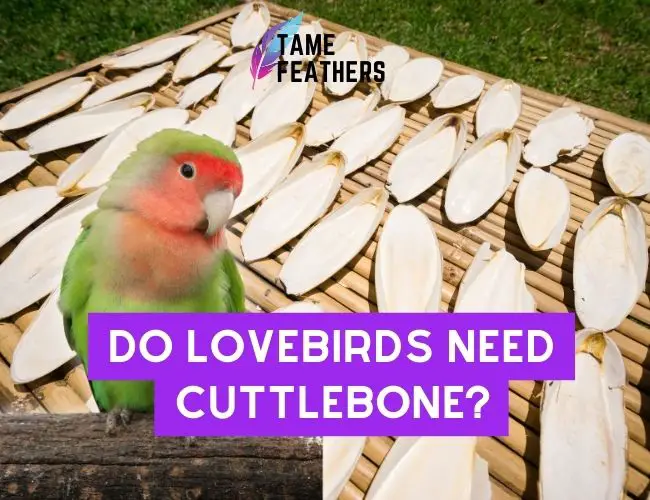You’ll be able to capture lovebirds in no time at all if you follow these easy strategies, methods, and gimmicks.
So grab your net and let’s get started!
Step 1: Gather Supplies
The first step to successfully catching a lovebird is to make sure that you have the proper supplies.You will need one or two cages, depending on how many birds you plan on catching.
If you are only looking to catch one bird, then a single cage should do the trick.
Make sure that the cage has plenty of perches and areas for your bird to hide if it gets scared.
You’ll also need some seed and water dishes as well as plastic plants for decoration.
Finally, some gloves and perhaps a net are helpful for safely handling your feathered friend.
Step 2: Choose A Location
Choosing an ideal location where you can find lovebirds is obviously key in this process; after all, no matter how prepared you are with equipment, it won’t be much use without any birds around! The best areas to look for wild lovebirds include parks or other open spaces with trees nearby; they prefer these habitats because they provide shelter from predators while still allowing them access to food sources such as fruit-bearing trees or shrubs.Be wary when picking an area though – avoid spots close to busy roads since these places may be too noisy and potentially dangerous for your potential pet.
Step 3: Bait The Cage
Once you’ve chosen an appropriate spot, it’s time to bait the trap! This can be done by placing some seeds inside the cage along with slices of fresh fruit like apples or oranges (lovebirds tend to enjoy sweet foods).Additionally, adding some nesting material like hay or shredded paper towel may help attract more birds into the trap if needed.
Once everything is in place, leave it alone overnight – most likely at least one curious avian visitor will show up sometime during this period.
Step 4: Remove Your Catch Carefully
When morning arrives and there’s finally a bird inside your cage – congratulations! Now comes the tricky part – carefully removing him/her from its new home without hurting either of yourselves in the process (remember those gloves!).First off don’t try grabbing him/her directly out of fear; approach slowly but confidently so as not frighten your catch even further away from being caught – hold out both hands close together near their body but not touching them then firmly yet gently scoop upwards towards yourself using both hands simultaneously whilst keeping their wings tucked away against their sides throughout.
.
Step 5: Acclimation And Proper Care
Now that he/she is safe in captivity begin acclimating them by providing adequate food & water plus giving them time each day outside their enclosure where possible until fully domesticated enough which could take several weeks depending on various factors such as how friendly were they before capture etc..
Also regular veterinary checkups mustn’t be forgotten about either due primarily because wild birds often carry diseases that could harm other pets within household environments plus themselves too if left untreated over long periods of time etc.
.
Lastly creating stimulating environments via toys & branches helps massively concerning mental wellbeing thus preventing boredom related issues commonly associated with caged animals especially those who remain confined mostly indoors permanently.
.
FAQs About Lovebirds
Have You Tried This Gourmet Parrot Food?
We get so much good feedback on these Bistro Parrot Food packs! Our readers feathered friends are absolutely loving it! The best part is, it is suitable for all birds and parrot-types. Parakeets, Cockatiels, African Greys, etc. Check it out… [amazon box=”B086KLFSZQ”]We Thought You Might Want To Know This About Lovebirds… 😊
can lovebirds and cockatiels live togetherbuy lovebirds near me
lovebird cereal where to buy




